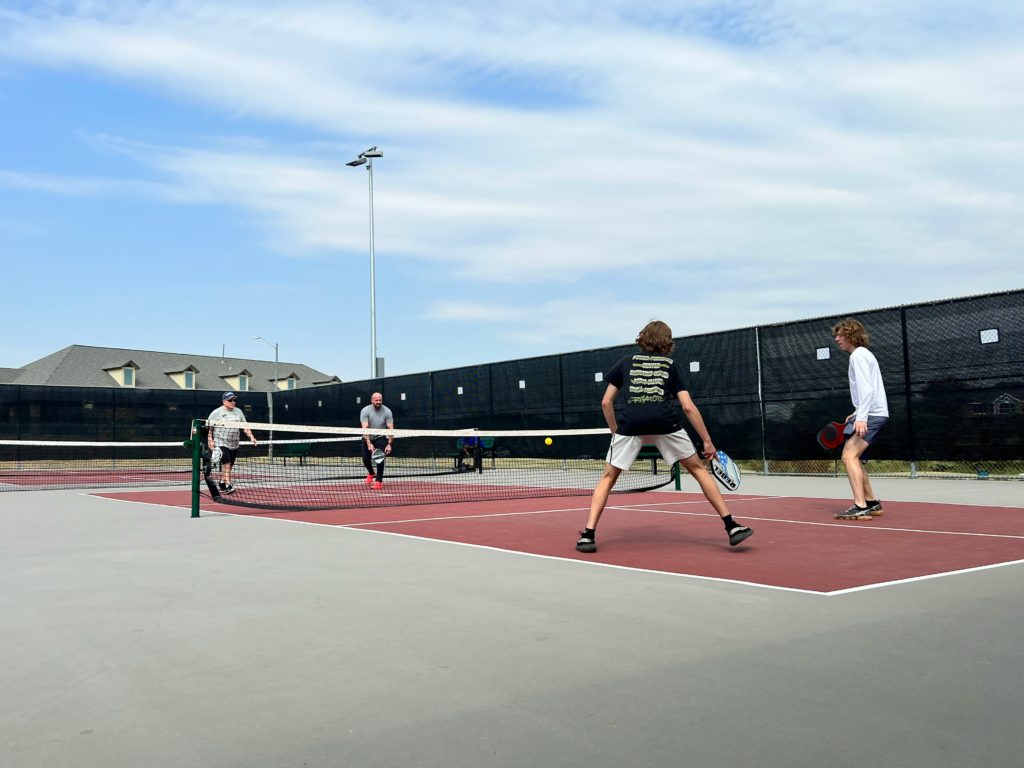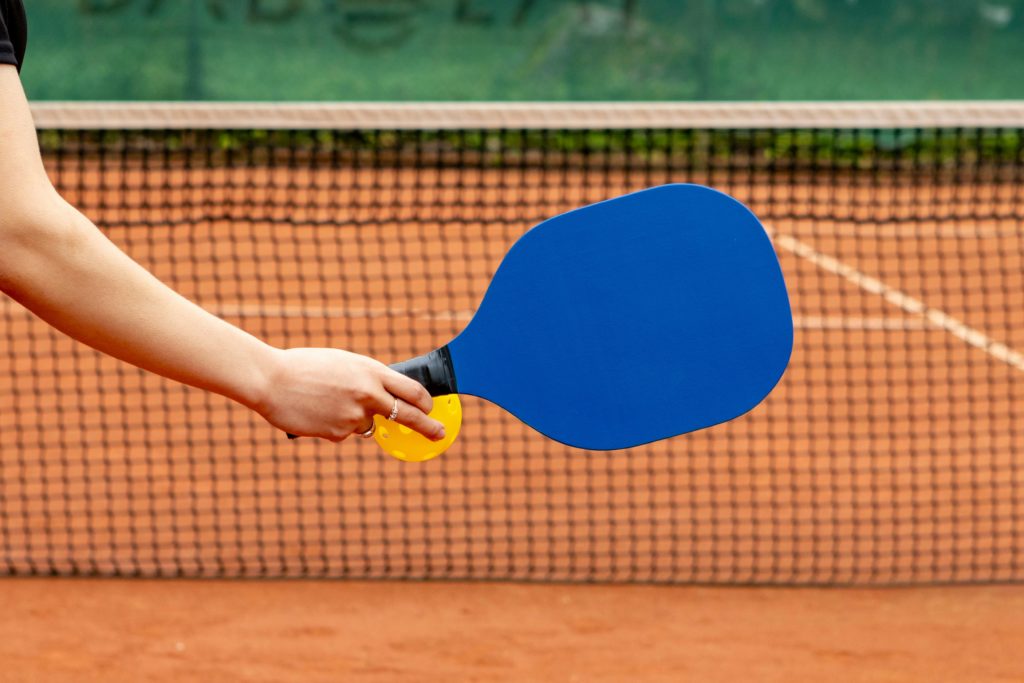Commercial Feature
How Pro Pickleball Paddles Enhance Your Court Skills

Pickleball is quickly gaining popularity as a fun and engaging sport that combines elements of tennis, badminton, and ping-pong. Whether you’re a beginner or a seasoned player, the type of pickleball paddle you use can significantly impact your performance on the court. Choosing the right paddle isn’t just about picking any paddle off the shelf; it’s about finding one that can help improve your skills and make your gameplay more enjoyable.
In this article, we’ll dive into why pro pickleball paddles are becoming essential for players looking to elevate their skills. We’ll explore their development, key features, and how they enhance precision, control, power, and spin. We’ll also provide tips on selecting the right paddle for your play style and discuss must-have accessories to complete your pickleball set. To back up our insights, we’ll reference authoritative sources, ensuring you get the most accurate and useful information.
The Evolution of Pickleball Paddles

The journey of pickleball paddles started with simple wooden paddles used by the sport’s founders. As the game grew in popularity, the need for more efficient and specialized equipment became obvious. Early designs were basic, but they laid the groundwork for significant advancements.
- Origins and Early Designs: Initially, pickleball paddles were fashioned from plywood, offering basic functionality but limited performance. These early paddles were quite heavy and lacked the finesse required for more advanced play.
- Advancements in Materials and Technology: Over time, manufacturers began experimenting with various materials such as graphite, composite, and carbon fiber. These materials not only reduced the weight of the paddles but also enhanced their durability and responsiveness.
- Shift to Pro Pickleball Paddles: Modern pro pickleball paddles incorporate cutting-edge technology and high-quality materials. Features like textured surfaces for better spin control, ergonomic grips, and balanced weight distribution have become standard. These advancements make it easier for players to improve their control, power, and overall performance.
You can read more about the history of pickleball on USA Pickleball.
How Pro Pickleball Paddles Enhance Your Court Skills
Key Features of Pro Pickleball Paddles
Pro pickleball paddles are crafted with features that can significantly boost your game. Here are some of the essential elements that set these paddles apart:
- Weight: Paddles can range from light to heavy. Lighter paddles offer better control and maneuverability, while heavier paddles provide more power.
- Material: The paddle’s material greatly affects performance:
- Graphite: Lightweight and excellent for control.
- Composite: Offers a balance of power and touch.
- Wood: Heavier and less costly, typically used by beginners.
- Grip: A comfortable grip helps improve hold and control. Look for:
- Size: Choose a grip size that matches your hand.
- Material: Cushioned grips can reduce fatigue.
- Paddle Surface: The texture and finish of the paddle face affect spin and control:
- Smooth: Less spin but more speed.
- Textured: Enhances spin but might reduce speed.
Each of these features can impact how well you play and how much you enjoy the game. For more detailed information on paddle guides, you can check out this article from Pickleball Central.
How Premium Pickleball Paddles Enhance Precision and Control
Premium pickleball paddles are designed with advanced materials and engineering to improve accuracy on the court. Here’s how:
Paddle Composition and Design
- Core Material: The core of the paddle, typically made from polymer, aluminum, or Nomex, influences feel and precision.
- Polymer: Offers a softer touch and more control.
- Aluminum: Known for its lightweight and precision.
- Nomex: Harder core, providing more power and less control.
- Face Design: The texture and coating of the paddle face help in accuracy.
- Rough Surface: Better for spin and control.
- Smooth Surface: Prioritizes speed over spin.
Examples of Precision Paddles
Some popular models noted for their precision include:
- Selkirk AMPED Series: Known for its control and lightweight design.
- Paddletek Tempest Wave Pro: Praised for its accuracy and touch.
User Testimonials and Expert Reviews
Players often share their positive experiences with premium paddles. Many find that upgrading to a pro paddle has helped them improve their shot precision and overall performance. For more about paddle precision, see this guide on paddle precision.
Investing in a premium pickleball paddle tailored to your playing style can make a world of difference. Whether you’re aiming for better control or enhanced power, the right paddle will elevate your game.
Improving Power and Spin with Pro Pickleball Paddles
Pro pickleball paddles are designed to boost your power and spin, enhancing your overall gameplay. The secret lies in the advanced materials and designs used in these paddles. Here’s how they help you:
Specific Models Known for Power and Spin
Several high-quality models are designed to boost your power and spin. For example, the Selkirk AMPED series is praised for its balance between power and control. Similarly, the Paddletek Bantam EX-L is known for its pop and spin capabilities.
Expert Testimonials
Professional players and coaches often recommend certain paddles for their power and spin benefits. According to Pickleball Magazine, many top-tier players favor paddles with a textured surface and polymer core for maximum spin and power potential.
Choosing the Right Pickleball Paddle for Your Play Style
Selecting the right pickleball paddle is crucial for aligning with your individual play style. Here’s a step-by-step guide to help you choose the best paddle for your game:
Define Your Play Style
First, identify your play style. Common play styles include:
- Aggressive: Focused on powerful shots and quick plays.
- Defensive: Emphasizes control and precise placement.
- Balanced: A mix of both aggressive and defensive elements.
 News / Chinese students denied UK visas over forged Cambridge invitations22 December 2024
News / Chinese students denied UK visas over forged Cambridge invitations22 December 2024 News / Cambridge ranked the worst UK university at providing support for disabled students21 December 2024
News / Cambridge ranked the worst UK university at providing support for disabled students21 December 2024 Arts / What on earth is Cambridge culture?20 December 2024
Arts / What on earth is Cambridge culture?20 December 2024 Comment / London has a Cambridge problem 23 December 2024
Comment / London has a Cambridge problem 23 December 2024 Features / Behind the bar: the students pulling pints22 December 2024
Features / Behind the bar: the students pulling pints22 December 2024




